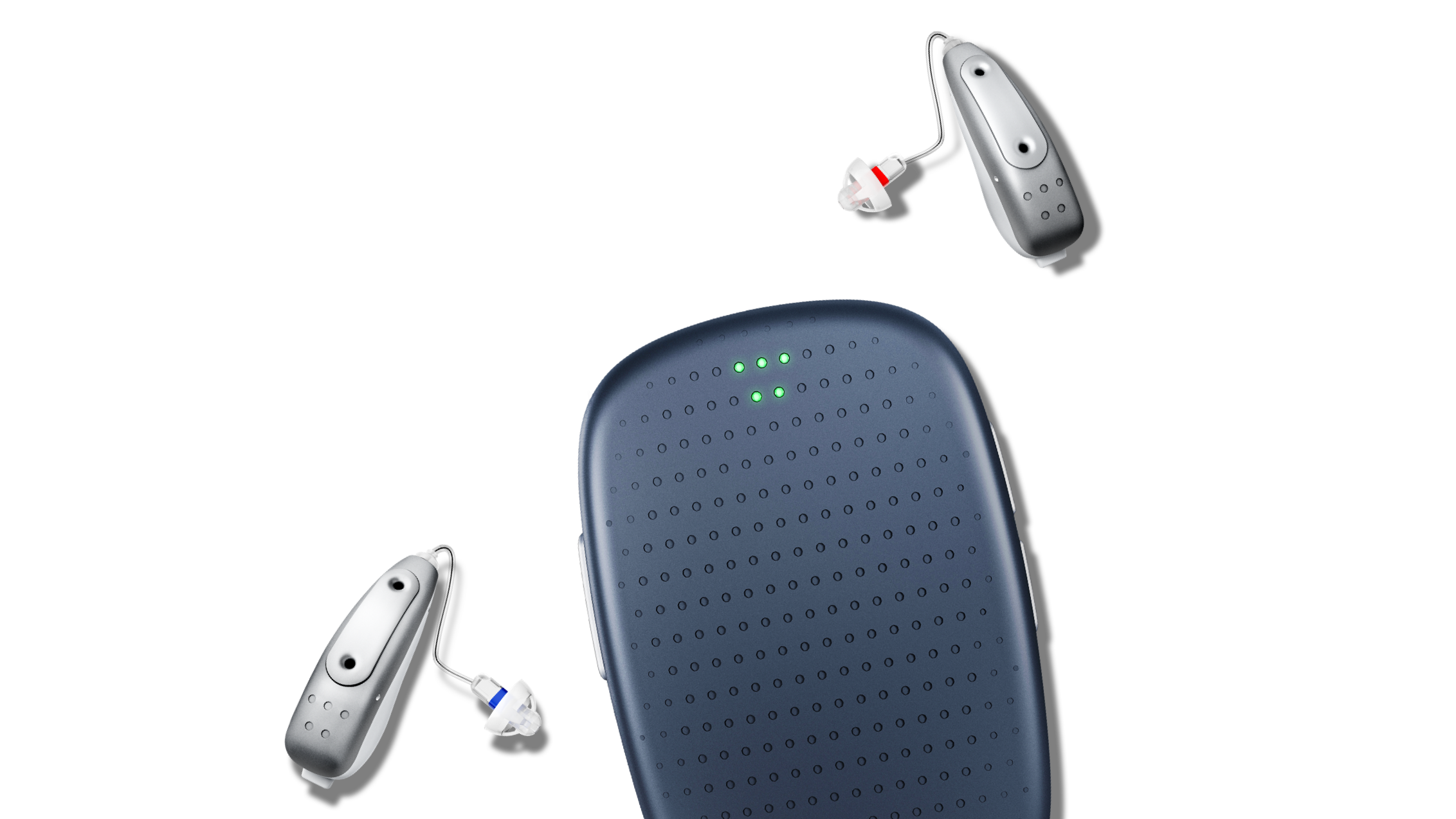Over the last decade, hearing aids have become so much more than just necessary medical devices that help the hard-of-hearing navigate the world of sound. In addition to these crucial and often life-changing capabilities, hearing aids can also act as the perfect Bluetooth in-ear buds for calls and music nowadays, 100% adjusted to fit your ears and your hearing loss.
While many manufacturers already support Bluetooth streaming on Android, one of the most innovative hearing aid companies is now jumping on board with an initially small selection of Android phones — Whisper.
It's possible that you haven't heard about Whisper yet, but here's the deal. The young San Francisco-based company only launched its hearing aid system in October 2020, but it's already managed to make headlines thanks to its unusual approach. The hearing aids you put behind your ears come paired with the so-called Whisper Brain, a small, palm-sized device that optimizes the sound experience using artificial intelligence algorithms. While the hearing aids work without the Brain when you don't want to carry the extra device on some occasions, it adds an extra layer of control and performance that you can't find on other hearing aids.
The app is coming to Android later.
The newly supported Android phones are the Samsung Galaxy S9, the Galaxy S10, the Galaxy Note10, the Google Pixel 3, and the Pixel 4. While you might wonder what's up with more recent phones like the Pixel 5 and the S21 series, the selection reflects several of the top 10 most popular phones in the US according to a 2021 YouGov study cited by Whisper.
Whisper CEO Andrew Song told us that the company wants to ensure that its hearing system works well with officially supported phones and that everything is tested, which is why there's this small initial selection. "Bluetooth is always a bit of a finicky experience for many people," Song said. "We want to give them confidence that if they're using these phones they will have a great experience." That's also the reason why Whisper initially limited Bluetooth connectivity to iPhones — after all, there are only a few models you have to adjust software for in the Apple ecosystem while still reaching millions of people.
Bluetooth is always a bit of a finicky experience for many people. We want to give them confidence that if they're using these phones they will have a great experience.
For now, Android users also won't get the dedicated Whisper app that's available on iOS, but the company is already working on it. The app will allow users to adjust the earpieces' volume separately or together and give access to more settings. It will also offer a quick way to check the battery level of the Whisper Brain.
Google introduced native hearing aid support as part of its open-source ASHA protocol with Android 10, giving hearing aid manufacturers a low-energy option to connect to phones that doesn't use as much power as regular Bluetooth. However, this new BLE system still isn't available on all phones, which is why Whisper (and many other manufacturers) use the Bluetooth hands-free protocol, or HFP for short. Song says that this will allow the company to expand to more phones quickly.
Song is hopeful about the future of Google's protocol, though. Google and Apple seem to plan more investments for using the Bluetooth Low Energy protocol with Bluetooth audio specifications, which could be a proper breakthrough for the hearing aid industry (and regular earbuds will certainly benefit, too).
Google (and Apple, too) is already doing a lot to make life easier for those who are hard of hearing. There's the Sound Amplifier app that allows you to put your phone on a table and use it as a remote microphone for your earbuds. Andrew Song tells us that he appreciates the efforts, and it's good that people invest in their hearing health. However, these makeshift solutions can only do so much, and at a certain point, a professionally fitted device will provide a better experience.
Hearing aids really are one of the most practical forms of augmented reality that exists.
Song goes as far as saying that hearing aids are, in essence, one of the most practical forms of augmented reality that currently exists: "We think a lot of time about augmented reality glasses, but hearing aids have millions of users around the world using them to literally augment their reality. And I think that is very exciting."
In contrast to many other hearing systems that you have to pay for up-front, Whisper is available for $179 a month (with a $139 a month introductory offer currently active) for a 36-month term that includes regular software updates and three-year loss and damage warranty. The Whisper hearing system can only be bought from hearing care professionals who precisely fit it to hearing loss.
Other hearing aid manufacturers have long supported Android, but they've been around for much longer than Whisper. I personally use Phonak Marvel hearing aids that connect to any Bluetooth transmitter, but I've noticed that phone call quality isn't exactly great for the other side — Whisper has hopefully figured this out better. There are also hearing aids from GN Hearing, the company that was first to support Google's open-source ASHA protocol, and many more.

